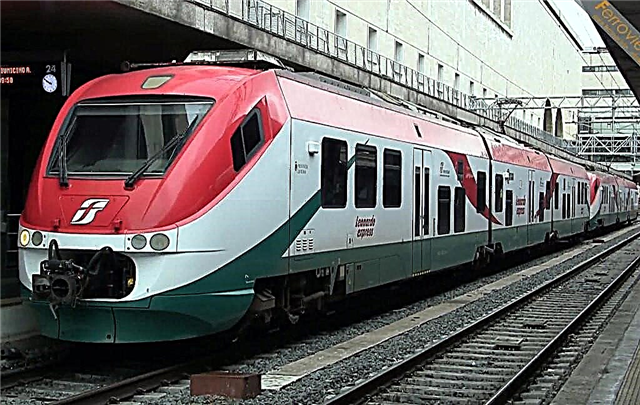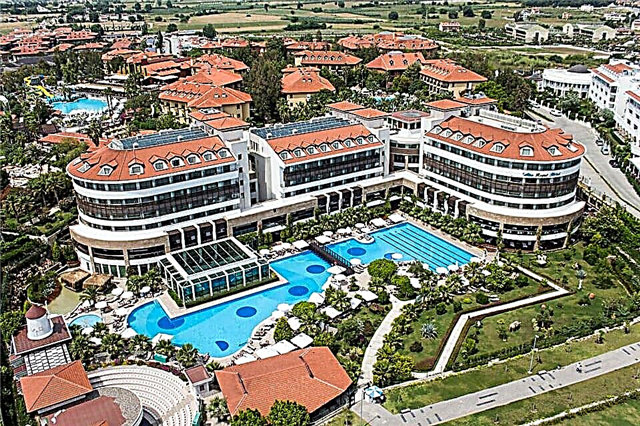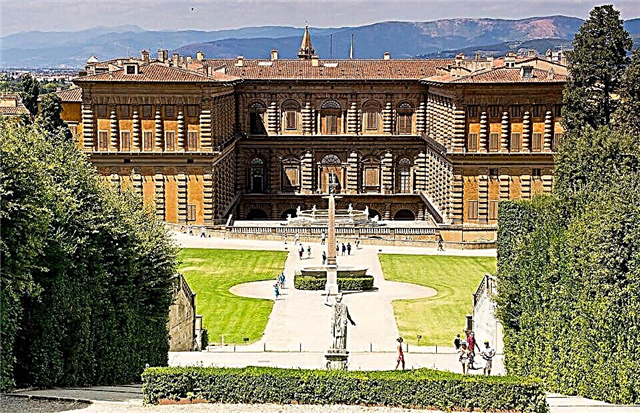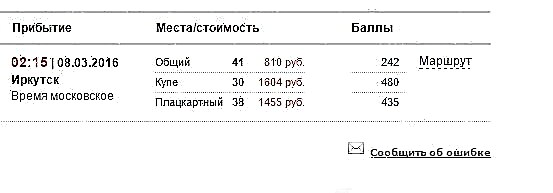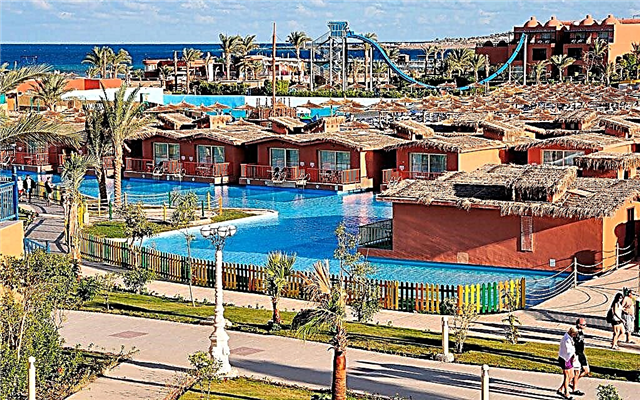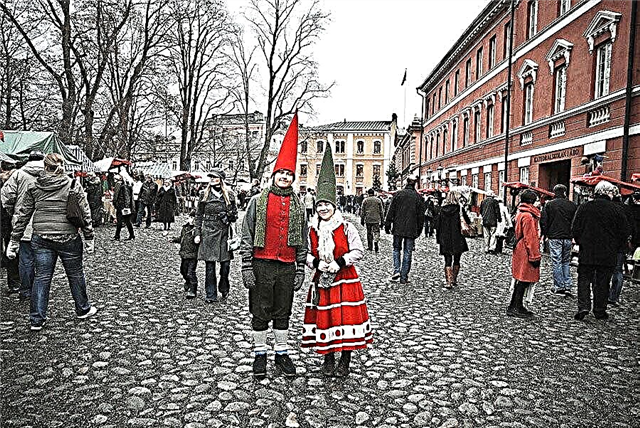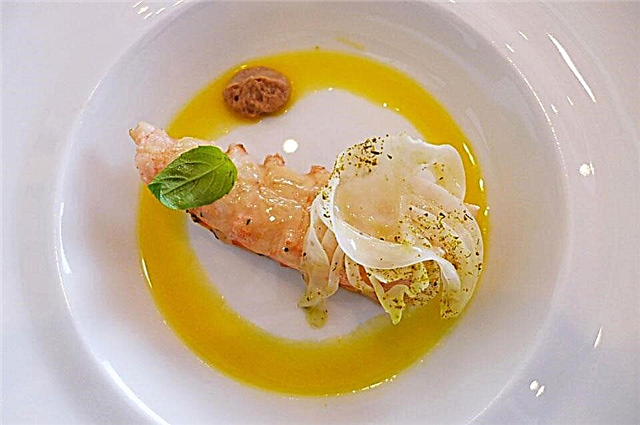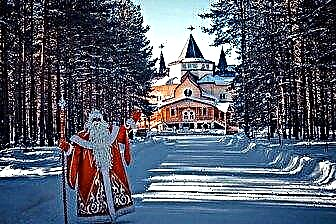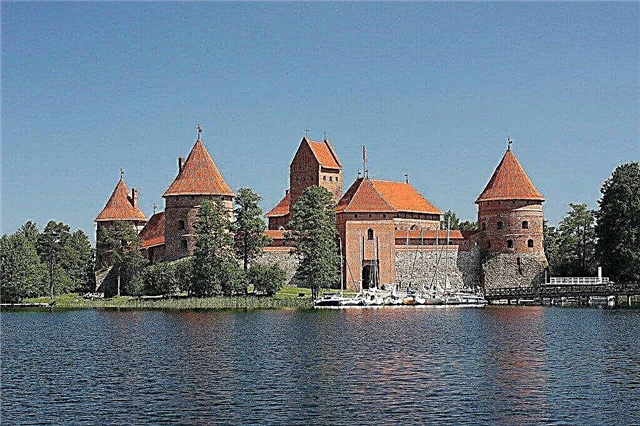The Republic of Lithuania is a state located in the north of Europe. It is recommended to start your acquaintance with the country from the capital. It is in it that many historical and architectural objects are located. Palaces, old town halls, churches and cathedrals - in Vilnius, sights are located almost on every corner. The former capital of the country, the city of Kaunas, is also worth visiting. The main natural site is the Curonian Spit.

The best hotels and hotels at affordable prices.
from 500 rubles / day
What to see and where to go in Lithuania?
The most interesting and beautiful places to visit. Photos and a short description.
Vilnius old town
The oldest part of the city, many buildings in which were built in the Middle Ages. Its area is just under 4 km², the main attractions can be walked around in a day. The appearance of the Old City has been formed over the centuries. For the original combination of architectural styles of different eras and the abundance of architectural monuments, UNESCO included the Old City in the list of cultural heritage of the world.

Trakai castle
Brick Gothic castle, founded in 1409. Located on the island of Lake Galve in Trakai. The castle is connected to the mainland by a wooden bridge. For a long time it belonged to the princes of Lithuania. In the middle of the 17th century, it was destroyed as a result of hostilities with Moscow troops. Restoration work on the ruins of the castle began in 1901 and was completed in 1970. Now the castle is one of the most visited places among tourists; it houses the city's museum.

Curonian Spit
A narrow sandy strip of land. The length is 98 km, the minimum width is only 400 meters. On the one hand, it is washed by the salty waters of the Baltic Sea, on the other, by the fresh waters of the Curonian Lagoon. Kos is included in the list of UNESCO sites, as there are no analogues of its natural landscape anywhere else in the world. Sandy white shores alternate with dense forest. For tourists there are excursion routes to natural and man-made sights.

Klaipeda old town
In the historic district of the city on the left bank of the Dange River, the atmosphere of antiquity prevails. There are many architectural monuments around the stone-paved Teatralnaya Square. Particularly interesting is the complex of architectural structures in an unusual half-timbered style, dedicated to art. One of the symbols of the Old Town is the Stock Bridge or Charles Bridge. Near it the sailing ship Meridian is moored.

Kaunas old town
The charm of Kaunas Old Town attracts thousands of tourists every year. Its center is the Town Hall Square. The Town Hall itself was built in the 16th century, from its observation deck you can see the entire historical part of the city. Residents of the city call it poetically - "White Swan". It is worth visiting the Gothic Cathedral of St. Paul and Peter. Vilnius is considered the most beautiful street in the region. In its old houses there are small cafes, pubs, bakeries.

Uzupis (Vilnius)
A small cozy district of Vilnius, separated from the Old Town by the small river Vilenka. Tourists and art lovers are attracted here by many art workshops and galleries. Representatives of the creative professions even founded their own Republic, which has a president, a flag and a constitution. Independence Day is jokingly celebrated on the 1st of April. The symbol of the community is a monument to an angel blowing a trumpet.

Gediminas Tower (Vilnius)
Monument of culture, history and architecture. It was built at the beginning of the 15th century on the Castle Hill and is part of the Upper Castle. The three-story tower is 48 meters high. The historical part of the city is clearly visible from the observation deck of the tower. The shape of the tower is octagonal, the style of construction is Gothic. Currently, its premises are occupied by the Lithuanian National Museum. His exhibitions tell about the history of the city.

Kaunas castle
Built to defend against Teutonic Crusader Knights. Founded in the 13th century, it is the oldest stone-built castle in Lithuania. About a third of the original castle has survived to this day, two towers have survived. One of them houses a tourist information center. It is planned to arrange a museum exposition and make a complete restoration. Even in a partially ruined state, the castle attracts many tourists.

Kaunas Town Hall
Has a classic look for a medieval public building. A high bell tower is attached to the premises of the city meeting. However, due to the fact that the construction went on for several centuries, several styles were mixed in its architecture - Gothic, Baroque, Renaissance, Classicism. The basement of the town hall houses the ceramics museum, and the main premises - the Kaunas city museum. In it you can learn about different periods of the city's life.

IX Fort (Kaunas)
Previously, the fort was called the Koven Fortress. Built in 1899, it served as a defense function during wartime. Of the nine built forts, only one remained in good condition. It is also an open-air exposition. You can see the preserved walls, redoubts, batteries. The main attention should be paid to the museum for the victims of the Holocaust, because this place was used by the Nazis for the mass execution of prisoners.

Sharp Brama (Vilnius)
Unofficially, the monument is called the "Holy Gates". They were built in 1522. This is the only part of the city wall that has remained intact. The arch was built in the Gothic style, and its facade is in the Renaissance style. The chapel of the Ostrobramskaya Mother of God is located above the gate. Her architectural style is classicism. The icon of the Mother of God in the chapel is considered miraculous and capable of giving a long-awaited child to childless couples.

St. Anne's Church and Bernardine Church
In the old town, two religious buildings stand out. St. Anne's Church was built in the Gothic style. Its construction was completed in 1500. The facade of the building is unusual. It is made original by lancet windows and decorative turrets. Each of its three parts is crowned with a tower directed into the sky. The Bernardine Church located next to it was built in the 16th century. This is one of the largest Gothic buildings in Lithuania.

Cathedral of St. Stanislaus (Vilnius)
Roman Catholic Cathedral in the status of a minor basilica. It is located at the foot of the Castle Hill next to the high bell tower. It was built in the style of classicism and resembles ancient Greek temples. Antique columns and austere style make this building imposing and monumental. There are several Rococo sculptures on the façade. The interior of the cathedral is decorated with over 40 works of art.

Church of Saints Peter and Paul (Vilnius)
Built in 1676 on the site where previously wooden churches were erected twice. The first burned down, the second was destroyed during the war. The building was designed by architects from Italy and Poland and is called the “pearl in the Baroque style”. But the interior of the church attracts more. It has 9 altars. The vaults are adorned with luxurious sculptural decorations. There are more than 2000 figures, bas-reliefs and stucco relief images in the church.

Cathedral of Saints Peter and Paul (Kaunas)
The construction of the cathedral took over 200 years. Later, the bell tower was completed. Now the building of the Gothic style is considered a monument of history and architecture and is the cathedral of the city. The height of the cathedral is 84 meters. The main altar of the cathedral was founded in 1755 by the sculptor Tomasz Podhajski. Highly artistic icons adorn the interior walls. These are the works of artists Mikael Andriolli and Gotthard Berhoff.

Palace of the Grand Dukes of Lithuania (Vilnius)
The most ambitious project for the restoration of old buildings in Lithuania. The castle was destroyed in the 17th century, and in the 19th century its ruins were finally demolished.Several fragments remained from the old palace building, but in order to find them, an archaeologist had to remove several meters of the cultural layer of the earth. Archaeologists and restorers continue their work today. The excavation site is a demonstration site for the national museum.

Museum of Occupations and Struggle for Freedom (Vilnius)
It is located in the building that housed the NKVD and the KGB for 50 years. The expositions on the first floor of the museum tell about the Sovietization of the country and the partisan liberation movement. On the second floor, the exhibition is dedicated to the deportation of the Lithuanian population to Siberia and life in the GULAG. The most difficult exhibition to see is located in the basement. It housed a prison, interrogation, torture chamber and execution room.

National Museum of Lithuania (Vilnius)
The main branch of the museum is located in Vilnius on the bank of the Viliya. Its expositions contain about a million exhibits. The exhibitions tell about the history and development of the country in different periods. The expositions are divided into thematic sections - numismatics, archeology, iconography, ethnography, art objects, the periods of the Middle Ages and the New Age. The country's national museum is visited by about 250,000 people a year.

MO Museum (Vilnius)
Private Museum of Contemporary Lithuanian Art. Its founders are businessmen Victor and Danguole Butkusy. Collected works from the 1960s to the present. The collection of art objects is extensive - paintings, photographs, sculpture, art objects and graphics. The museum building was built on the site of the Lietuva cinema. The first floor of the building is occupied by a cafe and a shop, while the exhibition hall and reading room are located on the second floor.

Devil's Museum (Kaunas)
The only museum in the world with a similar theme. Created on the basis of a private collection in 1966. The artist Antanas муmuidzinavičius has been collecting figurines of devils since 1906 and has collected 260 exhibits. The variety of the museum's cloisters is amazing. Some are made of unusual materials - leather, metal, plastic. Ashtrays, walking sticks, pens, mugs are made in the form of devils. There are devils from popular books or movies.

Military Museum. Vitovt the Great (Kaunas)
Opened in 1919. A small collection of the museum was significantly enlarged after the end of the First World War. In the future, it becomes even larger, collections of firearms and edged weapons, ammunition, paintings with military scenes appear in it. In total, more than 200,000 exhibits have been collected, which show the history of military affairs in the country. The second floor contains the wreckage of the Lituanic airplane.

Čiurlionis Museum (Kaunas)
National Museum of Art, opened in 1921. Dedicated to the works of the composer and artist Čiurlionis. In addition to the collection of his paintings, the museum contains personal belongings of the master - diaries, essays, letters. The works of other masters in various fields of art are also presented. There are objects of folk art, some of them were made in the 15th century. In total, about 300,000 exhibits are exhibited in the museum's collections.

Lithuanian Maritime Museum (Klaipeda)
Located in an ancient fortress on the Curonian Spit. In open areas, among casemates and defensive ramparts, collections of boats, ships, ship propellers and anchors are exhibited. The main collection includes prehistoric fossils, shells and corals. There are also 34 aquariums with such unusual inhabitants as jellyfish and penguins. There is also a dolphinarium. Military-historical exhibitions are located in the casemates.

Amber Museum (Palanga)
Opened in 1963. The museum's collections comprise 4,500 amber stones and items made from it. Some of the exhibitions are dedicated to the role of amber in the history and culture of mankind. The museum is located in the former palace of the Tyszkiewicz Counts. Its premises provide a decent backdrop for exhibits. A botanical garden with an area of more than 100 hectares is laid out around. The park's landscape project was created by a designer from France; more than 600 plant species grow in it.

Museum of Folk Life in Rumsiskes
Museum of Ethnography with an area of 175 hectares. It is located in the open air. The museum includes 180 buildings from different regions of Lithuania. Outbuildings, mills, chapels, farms, huts and the “Town of Craftsmen” - together they recreate the life of the Lithuanian countryside. Many buildings are about 200 years old. There is a 6 km long hiking trail through the museum. There are entertainment events on weekends and holidays.

Kernave
In ancient times, this place was the location of the first capital of Lithuania - a large city with large fortifications. Currently, about 200 people live among the hills. This historical site is appreciated by both tourists and UNESCO, which included Kernavė on the World Heritage List. Tourists can see the ruins of ancient city buildings and a wooden chapel built without a single nail.

Vilnius TV Tower
The largest television broadcasting center and the tallest building in Lithuania. The tower, built in 1981, is 326 meters high. A revolving restaurant is located on the 165-meter high platform. Visitors are delivered to it by high-speed elevator, which moves at a speed of 4 m / s. Until 2015, the tower was decorated with garlands before Christmas, like a Christmas tree. Now the garlands have been replaced with the light of lasers.

Three crosses (Vilnius)
An unusual monument is located on a rocky hill near Vilnius. Three concrete crosses aiming at the sky. Installed in memory of the executed and crucified monks in the XIV century. A staircase leads to the crosses at the top of the hill. An observation deck has been equipped, from which the whole city can be clearly seen. In the dark, turn on the backlight. The crosses illuminated with light give the impression that they are hovering over the city.

Hill of Crosses (Siauliai)
One of the main shrines of the country and a place of pilgrimage. An unusual attraction is a hill dotted with closely spaced crosses. There are about 50,000 crosses in total. This place is not a cemetery. Scientists still have no consensus as to when and by whom this monument was founded. One of the crosses was installed by Pope John Paul II, which increased the number of visitors to the mountain at times.

Mountain of Witches (Juodkrantė)
The mountain is 42 meters high and is located on the Curonian Spit. In ancient times, it was considered a sacred place among a number of tribes. With the arrival of the Inquisition in Prussia, witches began to gather on the mountain to perform rituals of nature worship. Since 1979, Lithuanian craftsmen have been gathering on its slopes and creating sculptures. Thousands of tourists come to see the collection of various wooden sculptures. A winding path leads to the top of the mountain.

Dzukiy National Park
Located in the south of the country. Its area is over 55,000 hectares. Interesting for its diversity of flora and fauna and natural landscapes. The villages of small ethnic groups in the region, where the masters of black ceramics live, are also protected. There are several architectural monuments in the park. The park is beautiful at any time of the year. Tourists move around the park not only on foot, but also by bicycles or kayaks.

Aukstait National Park
The area of the park is 400 km². The main attraction is the Ladakalnis Mountain. It is not only a natural monument, but also a historical one. In ancient times, ceremonies dedicated to the Slavic goddess Lada were held on its top. There are more than 100 lakes in the park, which are connected by small rivers and streams. Water tourism is developed in the park. There are many places for kayak rental, there are places for overnight stays.

Cape Vente
It is a 5 km long peninsula on the eastern coast of the Curonian Lagoon. In 1863, a lighthouse was installed on the cape, which belongs to the ornithological station and is a monument to technology. The 11 meter high lighthouse is located 30 meters from the coast. You can climb to the observation deck of the lighthouse by a metal staircase, which is decorated with forged ornaments. From the site one can see the Curonian Lagoon, Rusne Island, Curonian Spit.

Dunes of Nida
Unique and unusual natural formations in the center of the Curonian Spit. They are dunes blown by the wind. The sand of the dunes is light in color due to the high quartz content. Sometimes the dunes are called "wandering" or "wandering", because a year, under the influence of the wind, they move up to 10 meters, sometimes even crossing the Russian border. You cannot walk on the dunes; there are wooden paths around for inspection.

Palanga beach and pier
According to one of the authoritative British ratings, Palanga beach is among the 20 best beaches in the world. Clean and golden sand, warm and calm sea, pine trees along the beach line - all this attracts many tourists here. For the promenade, a pier was built on the site of a wooden one destroyed by a storm. The length of the pier is about 400 meters. It overlooks the sand dunes and sea waters, the landscape looks especially beautiful at sunset hours.


